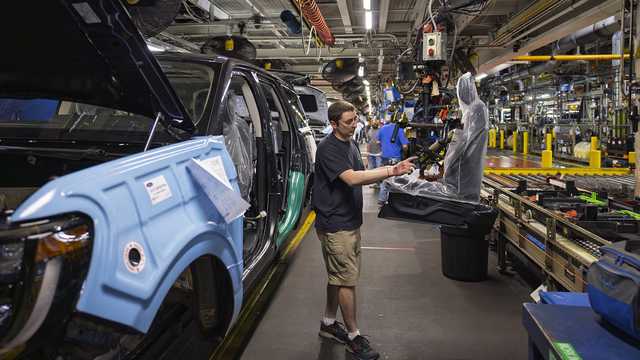The auto world is buzzing with the latest news: Ford tariffs are driving up costs, and the ripple effects are hitting consumers hard. Just yesterday, on May 7, 2025, Ford Motor Company announced price hikes on three of its popular Mexico-produced models—the Mustang Mach-E, Maverick pickup, and Bronco Sport—effective May 2. This move, one of the first major responses to President Donald Trump’s 25% tariffs on imported vehicles, signals a new era of challenges for automakers and buyers alike. With the industry scrambling and consumers facing sticker shock, let’s dive into what’s happening, why it matters, and what’s next.
Why Ford Tariffs Are Making Headlines
Trump’s tariffs, rolled out in early April 2025, slapped a 25% levy on the 8 million vehicles imported annually into the U.S., alongside tariffs on auto parts not compliant with the U.S.-Mexico-Canada Agreement (USMCA). Ford, despite its strong U.S. manufacturing base—79% of its U.S.-sold vehicles are built domestically—imports key models like the Maverick from Mexico. The tariffs are expected to cost Ford $2.5 billion in 2025, though the company has offset $1 billion through strategies like rerouting vehicles via Canada. However, absorbing the full cost isn’t feasible, leading to price increases of up to $2,000 on affected models, hitting dealer lots by late June.
Analysts warned this was coming. The Anderson Economic Group projected vehicle price hikes of $2,000 to $15,000, and Ford’s move confirms those fears. For budget-conscious buyers, the Maverick’s $1,150 MSRP bump, plus a $100 destination fee increase, stings. Yet, Ford insists it’s not passing on the full tariff burden, with spokesperson Said Deep emphasizing, “We’re doing what’s right for our customers and our business.”
The Bigger Picture: Ford Tariffs and the Auto Industry
The impact of Ford tariffs extends beyond Dearborn. General Motors (GM) faces a heftier $4-5 billion hit, with only 53% of its U.S.-sold vehicles made domestically. GM expects to offset 30% of these costs but hasn’t yet raised prices, unlike Ford. Other automakers, like Toyota and Volkswagen, which import over 40% of their U.S. vehicles, are under pressure too. Porsche and Audi have hinted at price hikes if tariffs persist.
Here’s a quick look at the industry’s tariff challenges:
- Ford: $2.5 billion cost, $1.5 billion net impact after offsets.
- GM: $4-5 billion cost, aiming to mitigate 30%.
- Imports: 8 million vehicles hit by 25% tariffs annually.
- Consumer Impact: Price hikes of $600-$2,000 (Ford), potentially $15,000 (industry-wide).
Trump softened some tariffs after industry pushback, offering credits for U.S.-produced parts and avoiding double tariffs on raw materials. Still, the 25% vehicle tariff remains, and with China announcing retaliatory measures, the global supply chain is on edge.
What’s Driving Consumer Reactions?
Buyers are feeling the pinch, but Ford’s trying to soften the blow. The company extended its “From America, For America” employee pricing campaign through July 4, offering discounts up to $4,000 on Mexico-built models. This move follows a Q1 sales surge, with Ford’s retail sales jumping 5% as consumers rushed to buy before tariffs kicked in. However, with net income down two-thirds and revenue dropping 5% in Q1, Ford’s juggling profitability and customer loyalty.
Social media is abuzz with mixed sentiments. Some X users praise Ford’s proactive stance, with one post noting, “Ford’s backing Trump’s tariffs while keeping prices in check—smart move.” Others, like analyst Spencer Hakimian, warn of job cuts, predicting, “40% of Ford’s 2025 earnings could vanish.” The debate is heated, and consumers are left wondering if their next car will break the bank.
Read also-Breeze Airways Soars with New Routes and Bold Plans for 2025
Ford Tariffs: What’s Next for Buyers and the Industry?
Looking ahead, Ford’s price hikes may be the tip of the iceberg. Federal Reserve Chair Jerome Powell warned on May 7 that sustained tariffs could spark inflation, slow growth, and raise unemployment. For buyers, this means higher car prices, insurance, and repair costs. Ford’s CFO, Sherry House, predicted a 1-1.5% industry-wide price increase in the second half of 2025, with sales potentially dropping by 700,000 units, per S&P Global.
Ford’s in a better spot than rivals, thanks to its U.S. plants, but the Maverick’s affordability—one of its biggest draws—is at risk. Automakers are exploring U.S. production to dodge tariffs, but that’s a long-term fix. For now, consumers face a tough choice: buy now at discounted rates or wait and risk higher prices.
This story’s far from over. As Ford navigates tariffs, competitors will likely follow with price adjustments, reshaping the auto market. Stay tuned—whether you’re a car buyer or an industry watcher, these changes will hit close to home. What do you think about Ford’s strategy? Will you grab a Maverick before prices climb higher? Drop your thoughts below and let’s keep the conversation rolling.
